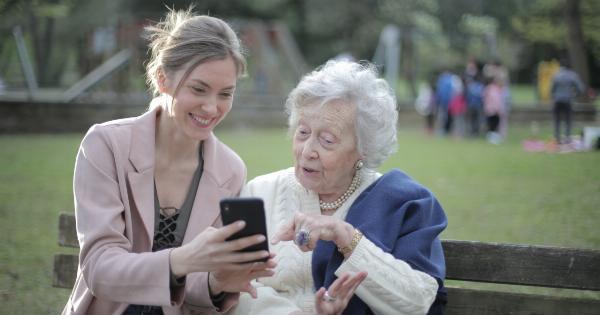Children have a unique perspective on life, often seeing things in a simple and innocent way. However, when it comes to understanding the concept of ownership, children can become easily confused.
The idea of possession, sharing, and boundaries can be challenging for them to navigate. This article explores the confusion children experience as they try to comprehend ownership and offers some tips for parents and caregivers to help them along the way.
The Early Years: Sharing and Possession
During the early years, children are taught about sharing and taking turns. They are encouraged to play with others and to share their toys and belongings. However, this can lead to confusion as children struggle to understand the concept of ownership.
They may wonder why they have to share their favorite toy or why another child gets to play with something that they consider theirs.
It’s important for parents and caregivers to explain the concept of sharing and ownership in a way that is developmentally appropriate for young children.
They need to understand that sharing doesn’t mean giving away their belongings permanently, but rather taking turns and being considerate of others.
Boundaries and Personal Space
As children grow older, they start to develop a sense of personal space and boundaries. They may become possessive of certain items or spaces, such as their bedroom or their favorite chair.
This possessiveness can lead to conflicts with siblings or friends who may unintentionally intrude on their personal space.
Parents and caregivers can help children understand boundaries by setting clear rules and expectations. This can include explaining that certain spaces or objects are personal and should be respected by others.
It’s also important to teach children how to communicate their needs and preferences assertively, without resorting to aggression or tantrums.
The Influence of Media and Advertising
In today’s digital age, children are exposed to a constant stream of advertisements and media messages that promote consumerism and materialism.
They are bombarded with images of new toys, gadgets, and products, which can reinforce a sense of entitlement and obsession with ownership.
Parents and caregivers can counteract this influence by teaching children about the value of experiences and relationships over material possessions.
Engaging in activities that emphasize sharing, gratitude, and empathy can help children develop a more balanced perspective on ownership.
Learning Empathy and Perspective-Taking
Empathy is a crucial skill that allows children to understand and appreciate the feelings of others. By developing empathy, children can grasp the concept of ownership from a different perspective.
They can imagine how it feels when someone takes their cherished possession or how it feels to be left out when others don’t share.
Parents and caregivers can foster empathy by encouraging children to take on different roles in pretend play or by discussing real-life scenarios that require empathy and perspective-taking.
Teaching children to consider the feelings and needs of others can help them navigate the complexities of ownership with greater understanding.
Teaching Problem-Solving and Negotiation Skills
Ownership conflicts are inevitable, whether it’s a dispute over a toy or a disagreement about personal space.
Teaching children problem-solving and negotiation skills can empower them to resolve conflicts respectfully and find mutually agreeable solutions.
Parents and caregivers can guide children through the process of problem-solving by encouraging open communication and active listening.
This involves teaching children to express their needs and concerns, while also respecting the needs and concerns of others. By practicing negotiation skills, children can learn to find compromises and reach fair agreements.
The Role of Language and Communication
Language plays a significant role in helping children understand the concept of ownership. As they expand their vocabulary, children can better articulate their thoughts and feelings about ownership and possession.
Parents and caregivers can use language to reinforce the concepts of sharing, boundaries, and empathy.
They can explain the difference between “mine” and “ours,” introduce words like “borrowing” and “lending,” and encourage discussions about ownership in various contexts. By consistently using appropriate language, children can gradually develop a clearer understanding of ownership.
Modeling Ownership and Sharing Behaviors
Children learn by observing the behaviors of the adults around them. By modeling ownership and sharing behaviors, parents and caregivers can provide a positive example for children to follow.
Adults can demonstrate sharing by offering to share snacks or belongings, showing appreciation for the things they borrow, and respecting the personal space and belongings of others.
Through these actions, children can learn that ownership is not just about possessing things but also about respecting others’ rights and feelings.
Celebrating Generosity and Acts of Kindness
Finally, it’s important to celebrate and recognize acts of generosity and kindness. When children witness others sharing, giving, and helping, they are more likely to internalize these values and apply them in their own lives.
Parents and caregivers can acknowledge and praise children when they demonstrate generosity or empathy. This positive reinforcement encourages children to continue behaving in ways that promote understanding and respect for ownership.
Conclusion
Ownership can be a complex concept for children to comprehend. From sharing and possession to boundaries and personal space, children need guidance and support to navigate these complexities.
By teaching empathy, problem-solving skills, and model sharing behaviors, parents and caregivers can help children develop a more comprehensive understanding of ownership. With patience and consistent reinforcement, children can eventually gain a clearer grasp of ownership and develop healthy attitudes towards possession and sharing.






























